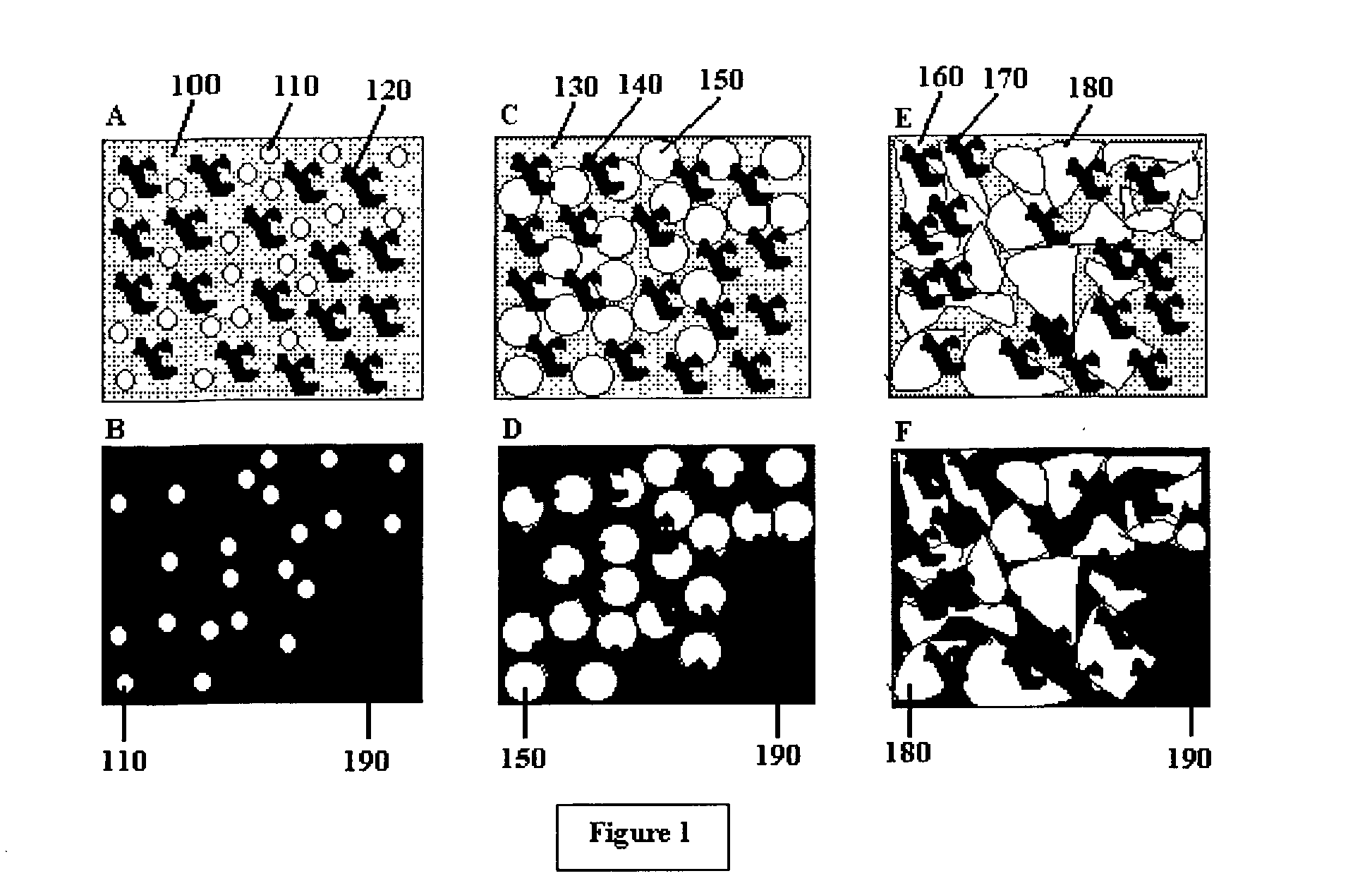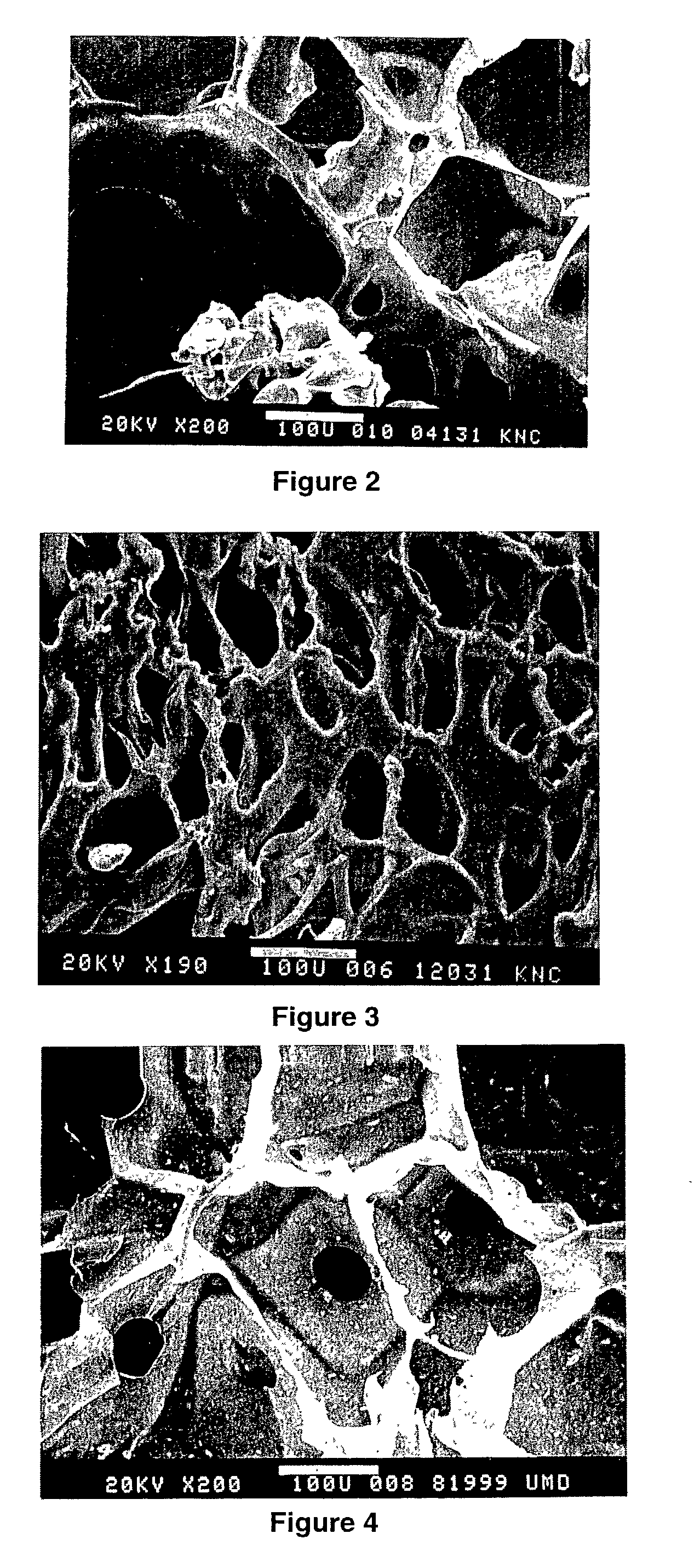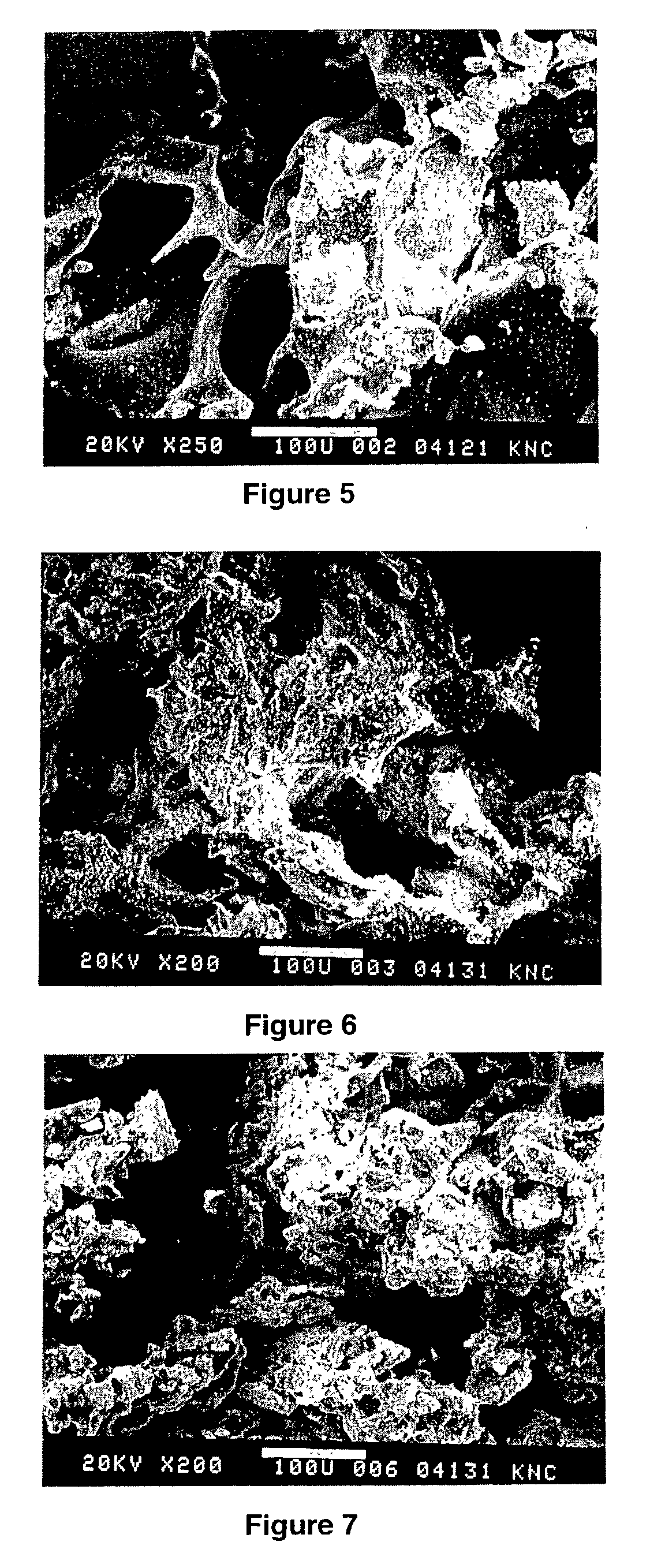Resorbable structure for treating and healing of tissue defects
a tissue defect and resorbable technology, applied in the direction of prosthesis, surgery, pharmaceutical delivery mechanism, etc., can solve the problems of large molecular weight degradation, and achieve the effects of rapid resorbing, high strength, and easy penetration
- Summary
- Abstract
- Description
- Claims
- Application Information
AI Technical Summary
Benefits of technology
Problems solved by technology
Method used
Image
Examples
Embodiment Construction
[0060]An ideal tissue repair / treatment / prosthetic device should possess various of the following properties: (1) it should be chemically biocompatable; (2) it should be partially if not completely resorbable so that the patient's own tissue ultimately replaces at least a portion of the device; (3) it should be porous to allow the infiltration of cells over time; (4) the porosity should provide it with a high surface area to mass ratio for cell attachment and delivery of therapeutics; (5) despite the porosity, it should provide a high degree of structural integrity in order to support, fixate, or treat surrounding tissues until the patient's own bone / tissue heals; (6) the device should have the ability to incorporate additives used to enhance the mechanical or biochemical performance of the device (e.g. strengthening agents, cells, drugs, biomolecules, other agents); and, (7) the device should be mass manufacturable to be able to provide the product at a reasonable price to the consu...
PUM
| Property | Measurement | Unit |
|---|---|---|
| size | aaaaa | aaaaa |
| size | aaaaa | aaaaa |
| morphology | aaaaa | aaaaa |
Abstract
Description
Claims
Application Information
 Login to View More
Login to View More - R&D
- Intellectual Property
- Life Sciences
- Materials
- Tech Scout
- Unparalleled Data Quality
- Higher Quality Content
- 60% Fewer Hallucinations
Browse by: Latest US Patents, China's latest patents, Technical Efficacy Thesaurus, Application Domain, Technology Topic, Popular Technical Reports.
© 2025 PatSnap. All rights reserved.Legal|Privacy policy|Modern Slavery Act Transparency Statement|Sitemap|About US| Contact US: help@patsnap.com



